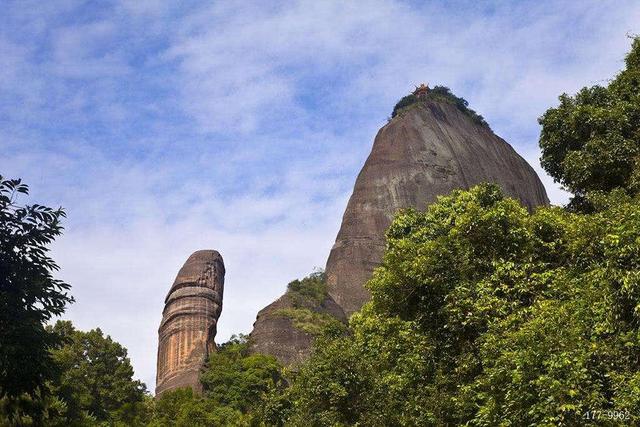
Exploring Nanhua Temple: A Cultural and Natural Adventure in Shaoguan
Discover Nanhua Temple in Shaoguan, Guangdong—a place where centuries-old Buddhist culture meets forested trails and panoramic views. This accessible cultural hike offers a balanced adventure for casual explorers and seasoned hikers alike.
Wear sturdy, grippy shoes
The trail includes uneven stone steps and forest paths that can become slippery, so solid hiking shoes or trail runners are essential.
Bring at least 1 liter of water
Hydration is crucial, especially during warmer months. Water refill spots are limited, so carry enough to stay energized throughout your tour.
Plan your visit for early morning or late afternoon
Avoid midday heat and catch the soft light that enhances both the temple’s beauty and the surrounding forest scenery.
Carry lightweight rain protection
Sudden showers are common from late spring through summer. A compact rain jacket or poncho will keep you comfortable without bulk.
Exploring Nanhua Temple: A Cultural and Natural Adventure in Shaoguan
Nanhua Temple Cultural Tours in Shaoguan, Guangdong present a journey where ancient spirituality meets nature’s quiet strength. Located about 40 kilometers southwest of downtown Shaoguan, the temple complex is more than a place of worship—it's an invitation to immerse in over 1,500 years of Buddhist heritage while tracing the paths that wind through lush forests and rugged hills. The main circuit tour covers roughly 3.5 kilometers of walking through well-maintained trails with an elevation gain around 150 meters, striking a balance between accessibility and satisfying physical engagement.
As you wander the grounds, cedar and camphor trees lean in close, their branches shifting as if sharing secrets. The air carries both the faint scent of incense and the earthiness of damp soil. Footsteps echo softly on ancient stone paths edged by vibrant moss, while the distant chanting from prayer halls adds a contemplative rhythm to the backdrop. The climb up to the pagoda offers sweeping views over Shaoguan’s rolling hills, each crest framed by wisps of morning mist that seem determined to stay just out of reach.
The terrain is gentle but occasionally uneven, requiring good footwear with solid grip. Expect a few short stair climbs and some pathways that narrow under overhanging branches. The trails are signposted in both Chinese and English, offering clear guidance without disrupting the natural flow. Along the way, stone lanterns flicker to life as dusk approaches, inviting quiet pauses to absorb the sacred atmosphere.
Tours are generally best taken in the morning or late afternoon to avoid midday heat and to catch the temple in soft, shifting light. Hydrate well and bring a refillable water bottle; while facilities exist, maintaining energy through steady hydration is crucial. Weather can shift suddenly, especially during late spring and summer, so lightweight rain gear is advisable.
Whether you’re drawn by the rich Buddhist history, the serene surroundings, or the chance to stretch your legs on a moderate hike, Nanhua Temple balances spiritual depth with natural challenge. It's a space that demands respect—not just for its cultural bearings but also for the forest that fiercely safeguards it. Engage fully and you’ll find both inspiration and practical adventure, wrapped in the quiet call of Shaoguan’s hills.
Nearby Trips
All Adventures
Boat Charters
Water Activities
Adventures near Shaoguan, Guangdong
Discover the unique and memorable adventures that make Shaoguan, Guangdong special.
Frequently Asked Questions
How accessible is Nanhua Temple for first-time visitors?
The temple complex is welcoming to all, with clear bilingual signage and well-maintained trails. Although parts of the route include stone steps and slight elevation, the moderate difficulty makes it suitable for casual hikers and families accustomed to some walking.
Can I join guided cultural tours within the temple grounds?
Yes, guided tours are available and recommended for gaining a deeper understanding of the temple’s rich Buddhist history, architecture, and the monks’ way of life. Many guides speak Chinese and English—booking in advance is advised, especially on weekends.
Are there lesser-known spots within Nanhua Temple worth exploring?
Beyond the main halls, quiet meditation gardens and the old bell tower offer serene views and fewer visitors. Nearby, a small waterfall streams down a rocky crevice that seems almost hidden, perfect for a peaceful break.
What wildlife might I encounter on the temple’s hiking trail?
Watch for colorful butterflies and cicadas whose calls fill the older trees. If lucky, you might glimpse a shy silver pheasant or spot the flash of a squirrel darting across branches.
Are there any environmental considerations for visitors?
Yes, Nanhua Temple encourages visitors to respect the natural environment by staying on trails, carrying out any trash, and refraining from loud noise to preserve the peaceful atmosphere and protect local wildlife.
Is photography allowed inside the temple buildings?
Photography is generally allowed outdoors and in some temple courtyards but restricted inside certain prayer halls to respect worship activities. Always ask local staff or guides if in doubt.
Recommended Gear
Hiking shoes with good traction
Provide support and stability on uneven, occasionally slippery trails.
Reusable water bottle
Keeps you hydrated, especially important in Guangdong’s humid climate.
Light rain jacket or poncho
Protects you from frequent spring showers and summer thunderstorms.
Sun hat and sunscreen
Shield from strong sun during midday stretches on open paths.
Local Insights
Hidden Gems
- "Old bell tower area overlooking the forest canopy"
- "Secluded meditation garden behind the main shrine"
- "Small waterfall east of the main temple path"
- "Stone carving reliefs seldom mentioned in guidebooks"
Wildlife
- "Silver pheasant"
- "colorful forest butterflies"
- "cicadas"
- "arboreal squirrels"
History
"Founded during the Northern and Southern Dynasties around 502 AD, Nanhua Temple is a key site of Chan Buddhism. It preserves ancient architecture, scriptures, and relics, and was the home of the revered Zen master Huineng."
